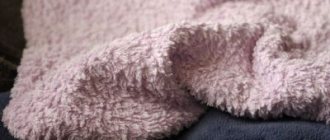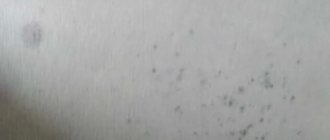We were all looking forward to getting out of quarantine. We were looking forward to putting on our favorite dresses, skirts and blouses and going to a cafe or going shopping. But being forced to stay at home took its toll on our sides, stomachs and other places. Changing their spring wardrobe for a summer one, many ladies were horrified to discover that they had almost nothing to wear. Everything is not enough: it presses here, it presses there. Don't panic, you don't have to open your piggy bank and run to the store for new clothes. We revive the wardrobe on our own, namely, we embroider clothes.
What to do if the dress is too small
How to make a size larger? The first thing that comes to mind in this case is to urgently lose weight. But this option is not always successful and easy to implement, so it’s better to immediately turn to the second option - embroidering a narrow dress.
In this case, further actions depend on the design of the product itself: the more seams and reliefs, the easier it is to alter a small dress and adjust it to the desired size.
Tips from tailors
Before you get to work and alter a tight dress, you should take into account the advice of experienced tailors. In particular, these:
- Before you start working with new fabric, you need to wash and iron it. This will help to avoid shrinkage of the product in the future and not spoil the finished outfit.
- If the item is new and a little small in size, you can simply open the seams carefully and reduce the allowances. This option may seem ineffective, because it only adds a few millimeters to the item on each side. However, in practice, it allows you to make the outfit much more spacious.
- If the dress needs to be lengthened a little, you can sew a small belt at the waist. A frill, gupure, contrasting insert or fringe sewn at the bottom will also look neat, depending on the style and style of the outfit.
- If the outfit has become tight in a certain place, then first you need to think about how to work in the problem area. For example, you often need to embroider the area of the hips, shoulders or back.
If you, considering options for how to make a thing a size larger, doubt your abilities, feel free to take the product to the studio. An experienced master will do the work at the highest level, taking into account all your wishes!
Tailoring your outfit to your figure
It’s good if the product needs to be enlarged in one problem area. The most difficult situation arises when the dress needs to be widened at the waist - then it needs to be completely altered.
If the outfit is tight only in the hips or sleeves, then you should look for information on how to remake the item yourself. It's not difficult at all and doesn't take much time. Depending on the location of the problem, you need to choose an action plan:
• On the sides . This is the simplest option - just carefully rip the item apart along the side seams, remove excess threads and sew in some pre-prepared fabric, guipure, wedges. • In the chest. It is enough to add small inserts of fabric at the front. • In the bust . If the item is small in the specified area, then the best option would be to make the neckline larger or add ribbons or lace. • In back. There is one option here - to rip the thing apart and make inserts in the back area. • In length. Perhaps this is the simplest case - you just need to add a wide ribbon at the bottom or select an insert from a similar fabric. To make the product more elegant, you can add a frill. • In width. If the product is straight cut, then you can make an insert in the front, back or sides.
Sew the armhole under the arm
If the dress is wide in the sleeves and under the arms, it is recommended to sew in the armhole so that the product fits beautifully to the figure. To narrow the sleeve neckline, the first thing you need to do is outline it. Then the clothes are put on and the shoulder point and axillary folds are located. To do this, you need to hold a ruler under your hand and mark the front and back notches along its top line with chalk. It is necessary to measure the product on underwear and with shoulder pads, if they are expected when wearing a dress.
You might be interested in Interesting patterns for men's bow ties
How to sew an armhole
Making inserts
To make inserts, you need to follow these steps:
- Prepare the dress: rip off the neckline, the lower part of the product. The thing definitely needs to be steamed.
- Before cutting the clothes, you need to fold them, aligning the shoulder and side seams, the hem and neck halves, reliefs and darts. Using special pins, you need to pin together all the combined seams and mark the half-skid.
- If one strip is used to increase the length of the dress, then it is worth cutting the front along the half-skid line. If there are two stripes, you need to attach a line to the half-skid, make a marking, step back a certain number of centimeters from it and cut off both shelves.
- Next, you should proportionally reduce the neck. To avoid making a mistake, it is advisable to use your own chest height measurement. The approximate formula looks like this: neck tuck solution - the width of the finished insert subtract 1/3 from the finished insert. The top of the dart should always be at least 2 centimeters above the bust line.
- Now you need to try on the product and cut off all excess. If you feel comfortable in such a thing, you can proceed directly to sewing.
- All that remains is to make the inserts, smooth out the seams and the bottom of the neckline.
After such simple procedures, you can safely put on the finished outfit and feel irresistible in it! We also recommend watching a video on how you can make your favorite dress bigger if you have gained weight or if it has shrunk after washing:
When buying without first trying on, a situation often arises when the item turns out to be too big. Almost all wardrobe items can be easily sewn in by adjusting them to size. But what to do if the dress turns out to be tight, is it possible to change it to a larger size, how to do this - such questions are often asked after making purchases without trying them on. Dresses of a certain style can be altered so that they become looser on the sides, in the chest and hips.
Silk
Silk items should not be machine washed, just as you should not try to reduce clothing sizes in this way.
Silk is the most delicate, thin fiber, so clothing can only be reduced in size by hand.
Natural material is afraid of high temperatures, so this method will not work.
To shrink clothes, wash them in hot water. The temperature of the liquid should be 10 degrees higher than indicated on the label.
You will also have to forget about drying in an automatic machine. Dry silk items in a well-ventilated area on a clothesline in the sun or in a horizontal position.
Arranging things yourself is not difficult. The main thing is to know how to do it correctly. Therefore, it is worth familiarizing yourself with the materials on shrinkage, obtaining all the necessary information, and only then proceeding with the procedure.
If you are afraid to tempt the fate of your favorite item, it is better to take it to a seamstress. And the last option is to give it to relatives and friends. You can also take your clothes to a homeless shelter.
What you need for work
To correct this situation, you need to prepare special sewing supplies. The process of altering a finished product is often associated with patience, because the basis for altering a dress is ripping the seams.
- Sharp tailor's scissors and small nail scissors. Scissors are necessary for ripping seams, making cuts and cuts.
- Needles and pins. Necessary for chipping or connecting different parts of the product when sweeping parts is planned.
- Centimeter, ruler. Necessary for drawing straight lines so that the parts of the product are symmetrical relative to each other.
- Chalk or a piece of soap. With the help of these objects, marks are left on the fabric, lines are drawn along which a seam must be made in the future.
- Threads of different colors. They select threads that match the main color of the product, and also use colored threads to highlight an area on the dress.
- Sewing machine. Needed for sewing seams.
Reference! To rip small seams, it is recommended to use razors or stationery knives.
Selecting material for alteration
Much of the success when altering a finished product using a different fabric depends on the selection of material. Experienced seamstresses advise following the basic rules when looking for a good alternative:
- to model the yoke in the upper part of the dress, mesh, lace, and guipure are used;
- on the sides and hips it is customary to use inserts made of guipure, rigid lace, and satin;
- for inserts on the sides, it is necessary to select a fabric so that when sewing in parts it does not fray, create creases or pull the fabric;
- For the insert, over which lacing is made, thick knitwear is used, which holds its shape so that the lacing does not pull the edges of the insert towards the center.
One of the criteria is the choice of color. Stylists advise using combinations that are similar in color scheme or resorting to the contrast method. For example, for a white and black dress model, red or bright blue inserts would be appropriate, while milky beige or cream shades will make the outfit unclear.
In the studio
The need to take a sundress or dress to a studio arises if you can’t do it yourself or don’t have a machine. It is also better to trust a specialist if the dress has a complex cut or needs to be changed by 3-4-5 sizes (then only a professional can recut it).
It is also important to remember that there are certain specifics when working with elastic fabrics. They can become pulled together or deformed when sewing and, in order not to spoil the product, it is better to trust the seamstress
If the dress has a complex pattern and many elements, then it will be difficult to reduce its size on your own. In this case, it is better to hand over the dress for a girl or woman to an atelier; experienced seamstresses will do it efficiently. Evaluate the rationality of your choice; this option is not always economically justified. It should be remembered that different fabrics used for sewing dresses have different quality characteristics, for example, linen and knitwear. They stretch and lay differently, this should be taken into account when remaking finished products.
Additional tips and tricks
When altering a dress if it turns out to be tight, certain rules must be followed. The main condition is the ability to refrain from overloading the bow. Using several techniques at the same time can create a comical image. The best option is the thoughtful use of one technique in that part of the product where there is a problem with the wrong size.
- When using a colored or contrasting insert to increase the size in the chest, hips or waist, the same fabric is used to decorate the edges of the skirt or sleeves. This creates the illusion of a complete combination of two fabrics in one product.
- Before using the selected material, it is washed and ironed. After washing, the fabric may shrink or change color.
- After sewing the main seams, they are carefully and carefully ironed to eliminate traces of the previous seam.
- After the dress is altered by sewing in panels, it is washed by hand to eliminate the possibility of shrinkage again.
- Some styles require the addition of decorative elements after alteration. An example of such decoration: the use of brooches, bows, epaulettes.
When altering a new but ill-fitting dress, it is washed first to work with a washed item and to be sure that it will not shrink further.
When buying without first trying on, a situation often arises when the item turns out to be too big. Almost all wardrobe items can be easily sewn in by adjusting them to size. But what to do if the dress turns out to be tight, is it possible to change it to a larger size, how to do this - such questions are often asked after making purchases without trying them on. Dresses of a certain style can be altered so that they become looser on the sides, in the chest and hips.
Are we going on a diet or changing?
The main dilemma that visits women in such a situation is: what is easier - to remake yourself into a dress or a dress to suit yourself. Let's be honest: not everyone has the desire and willpower to lose weight. Sometimes health problems become an obstacle. But even when a woman is ready to take care of her figure, she does not always have the necessary amount of time. For example, an outfit was purchased for a holiday that will take place in a couple of days. In any case, it will not be possible to reduce your volume by a size or even more within such a period.
Then there is only one way out: make the dress bigger. Just first you need to soberly assess this possibility: imagine what you would like to see the end result, understand whether this particular style is suitable for remodeling. If the dress has additional elements (ruffles, ruffles, yokes), then after alteration they will successfully disguise the new inserts. And if it has a strict straight cut, then you will need to act extremely carefully so as not to spoil the impression of the outfit.
What you need for work
To correct this situation, you need to prepare special sewing supplies. The process of altering a finished product is often associated with patience, because the basis for altering a dress is ripping the seams.
- Sharp tailor's scissors and small nail scissors. Scissors are necessary for ripping seams, making cuts and cuts.
- Needles and pins. Necessary for chipping or connecting different parts of the product when sweeping parts is planned.
- Centimeter, ruler. Necessary for drawing straight lines so that the parts of the product are symmetrical relative to each other.
- Chalk or a piece of soap. With the help of these objects, marks are left on the fabric, lines are drawn along which a seam must be made in the future.
- Threads of different colors. They select threads that match the main color of the product, and also use colored threads to highlight an area on the dress.
- Sewing machine. Needed for sewing seams.
Reference! To rip small seams, it is recommended to use razors or stationery knives.
Instructions for upsizing
It is quite easy to reduce a finished product by one size, but making a finished product a size larger is almost impossible. The exception is women's dresses, which are sewn according to standard patterns. This is due to the peculiarity of using the technique when special allowances are left on the sides, as well as on the main seams. Using this simple technique, you can make a tight dress fit properly.
The style and model of the dress also matter when altering. The more inserts, fittings or decorative elements there are on a product, the higher the likelihood of successful remodeling.
In the hips
There is often a situation where a dress fits true to size, but is too tight in the hip area. In this case, it is enough to undo the seams on the hips and reduce the allowances. The main task is to make the seam lines smooth and invisible from the outside. The second way to increase the hip area is wedge-shaped inserts. To do this, you will need fabric that is suitable in structure and contrasting in color. It is necessary to sew in the wedges strictly following the pattern, maintaining symmetry.
At the waist
To increase your waistline, you can use one of the following options:
- Raising the waistline, inserting a peplum. This option is perfect for straight-cut models. The only difficulty is the selection of fabric: it must fully match the type of fabric on the finished product, repeat the pattern and structure.
- Changing the belt line. The dress can be cut off below the bust line, then have a wide insert made of contrasting material.
- Changing the model. To do this, symmetrical inserts are made along the waistline on each side. This method requires high skill.
On the chest
There are several alternative methods for increasing dress bust size:
- unraveling seams, increasing the line due to allowances and darts;
- increasing the neckline, if the style allows it;
- inserts made of contrasting material, sewing in decorative elements.
Shorten the skirt
You can shorten a skirt in several ways, and they will depend on the style of the dress:
- Trapezium implies uniform expansion downwards. To shorten this style, you must first put on the product and mark the desired length of the skirt. From the marked line you need to measure down 2-3 centimeters for allowances and make a mark or draw a line with chalk. You need to measure from the hem to the waist, but not vice versa! It is important to measure the same distance on all sides and then cut. Before stitching, make a small hem and baste the new seam. It is recommended to stitch after a control check.
- A straight skirt can be shortened much easier than other models. Even a beginner can cope with this task. The product must be folded at the seams and leveled on a hard, flat surface. Next, from bottom to top (to the desired length), marks are made on the right and left with chalk. Then the lines are connected, a straight line is drawn that will be parallel to the bottom. All that remains is to cut off the free edge evenly, hem and stitch. It is important not to forget to iron the seam so that it is not noticeable.
- Skirt with pleats. Before sewing or shortening a product with folds, you need to wash it and let it hang on hangers for several days. At home, it is easier to shorten such a skirt at the top than at the bottom. First, the skirt and the belt are torn off from the bodice, so extra centimeters are removed, and then the belt is sewn into place. In a studio setting, things are done differently. The folds are smoothed out using a special sender, the length is trimmed, like a trapezoid or sun flare, and then crimped back.
Pleated skirt
Selecting material for alteration
Much of the success when altering a finished product using a different fabric depends on the selection of material. Experienced seamstresses advise following the basic rules when looking for a good alternative:
- to model the yoke in the upper part of the dress, mesh, lace, and guipure are used;
- on the sides and hips it is customary to use inserts made of guipure, rigid lace, and satin;
- for inserts on the sides, it is necessary to select a fabric so that when sewing in parts it does not fray, create creases or pull the fabric;
- For the insert, over which lacing is made, thick knitwear is used, which holds its shape so that the lacing does not pull the edges of the insert towards the center.
One of the criteria is the choice of color. Stylists advise using combinations that are similar in color scheme or resorting to the contrast method. For example, for a white and black dress model, red or bright blue inserts would be appropriate, while milky beige or cream shades will make the outfit unclear.
How to make a woman's jacket smaller?
Today I will tell you how to reduce the size of a women's jacket.
Many of you probably have a couple of jackets hanging in your wardrobe, slightly out of fashion, but still very decent. I understand that you may be sorry to part with them, so I will tell you about one way to adjust the jacket to your figure and fashion :).
So, if the jacket is too big, how to alter it?
First, we rip off the shoulder pads. If the jacket is lined, you can get under it by opening the side seam of the sleeve of the lining by 20 centimeters. Then we will carefully sew this seam and nothing will be noticeable.
It is advisable to do the following operation together. Ask your mother, sister or friend to help you. It is necessary to install the shoulder pad on the shoulder so that its thick part protrudes approximately 1 cm beyond the shoulder bone. Now your assistant should raise the sleeve cap (that is, the very seam where the sleeve is sewn to the armhole) so that it matches your shoulders. You need to pin the sleeve cap to the shoulder seam and make sure it sits in place. If not, try again and install the shoulder pad again.
Once the new high point of the sleeve cap is found, pin the cap to the front and back of the jacket in several more places, creating a new armhole line. This applies only to the top of the cover; there is no need to pin the sleeve under the arm.
When a new sleeve sewing line has been found, check whether the new shoulder fits you. At the same time, check whether the sleeve is too wide and whether there is excess fabric that can be tucked into the side seam. If desired, you can mark the undercuts along the front and back. On plain fabrics, try to mark the darts with maximum symmetry and accuracy. On colorful or variegated fabrics, small inaccuracies will not be noticeable, but on plain fabrics they will be.
At the same time, decide on the length of the jacket.
Now take off the jacket and mark with chalk on the front side the “sewing” line for the sleeve where it is marked with pins. Take out the pins. Reach inside the jacket and mark with chalk where the sides and sleeves will be sewn under the arms and in the darts.
Open the sleeve from the jacket, noting the highest point of the cap that was sewn to the shoulder seam and the lowest point that was sewn to the side seam. If the sleeve consists of two parts, mark out the guidelines by which you will install it in place.
Trim off excess fabric on the front and back of the jacket along the marked line, leaving a seam allowance. Line up the armhole line, all the way to the armpit. Measure the lengths of the shoulder seams and make sure they are the same. If you were planning to remove the width of the jacket from the side seams, now is the time to do it. Next, the sleeve is sutured, if planned.
Now we insert the sleeve back into the armhole, pin it and make sure that the sleeve cap is slightly larger than the armhole (the excess is placed at the top of the collar). If not, then you need to sew the jacket along the side seam or take it a little into the shoulder seam. We sew in the sleeve. We install the shoulder pad in a new place so that its thick part protrudes slightly beyond the line of sewing the sleeve. If necessary, the shoulder pad should be reduced. This can be done on both the thick and thin sides. We fasten the shoulder pad by hand, basting it to the protruding part of the seam of the sleeve cap.
Now it’s time to stitch the grooves along the marked lines, and also reduce the length.
To be honest, I hate shortening jackets, but I have to :).
Cut the bottom of the jacket along the marked line (leaving a hem allowance of 5-6 cm), pulling the lining up. Turn the jacket inside out through the open sleeve of the lining. Glue the bottom of the jacket with non-woven fabric. Check with the cut piece. Try to completely repeat what was done there. Sew the lining and main fabric with one seam. Secure the seams of the collar and the bottom of the jacket together so that the collar does not straighten out or come out from under the main fabric.
Turn the jacket onto your face, make sure you did everything correctly. Steam the new seams with an iron.
Try on your jacket. If everything is in order, you can sew up the torn sleeve of the lining. We sew either an overlay on a machine, or a blind seam by hand.
- How to decorate a white jacket Today in the article: the idea of decorating a simple white jacket. A white jacket (or any other color too) is of a simple cut or rather boring.
- How to make a blouse smaller? It happens that you have a favorite shirt or blouse in your wardrobe, which, unfortunately, has already gone out of fashion, or has lost its relevance due to more.
Additional tips and tricks
When altering a dress if it turns out to be tight, certain rules must be followed. The main condition is the ability to refrain from overloading the bow. Using several techniques at the same time can create a comical image. The best option is the thoughtful use of one technique in that part of the product where there is a problem with the wrong size.
- When using a colored or contrasting insert to increase the size in the chest, hips or waist, the same fabric is used to decorate the edges of the skirt or sleeves. This creates the illusion of a complete combination of two fabrics in one product.
- Before using the selected material, it is washed and ironed. After washing, the fabric may shrink or change color.
- After sewing the main seams, they are carefully and carefully ironed to eliminate traces of the previous seam.
- After the dress is altered by sewing in panels, it is washed by hand to eliminate the possibility of shrinkage again.
- Some styles require the addition of decorative elements after alteration. An example of such decoration: the use of brooches, bows, epaulettes.
When altering a new but ill-fitting dress, it is washed first to work with a washed item and to be sure that it will not shrink further.
How to properly sew the sleeves of men's and women's shirts
Sometimes when trying on, it turns out that the sleeves of a shirt are too big in the armhole area. The overall appearance suffers from this. The armhole is reduced by suturing the area between the top and bottom of the center of the shirt. To reduce the armhole, you cannot do without ripping the sleeves. After tearing off the sleeve, use a pin to fasten the armhole, measure the distance required for suturing, and try it on. Then the sleeves are sewn in along the new line and the fabric is smoothed out on the inside.
When reducing the armhole, there is a possibility that you will also have to reduce the width of the sleeve along the entire length of this part of the product. There are 2 ways to reduce the sleeve width along a redesigned armhole:
- when basting a sleeve to a narrowed armhole, a vertical fold is placed on the sleeve, which, after sewing to the armhole, must be carefully ironed;
- if the method of touching the fold is not suitable, then the sleeve is sutured along the seam, redoing the vent and sewing in the cuffs.
Advice! When completely altering the sleeve width, the cuff does not need to be reduced. To make it narrower, just alter the button a few millimeters to the left.











